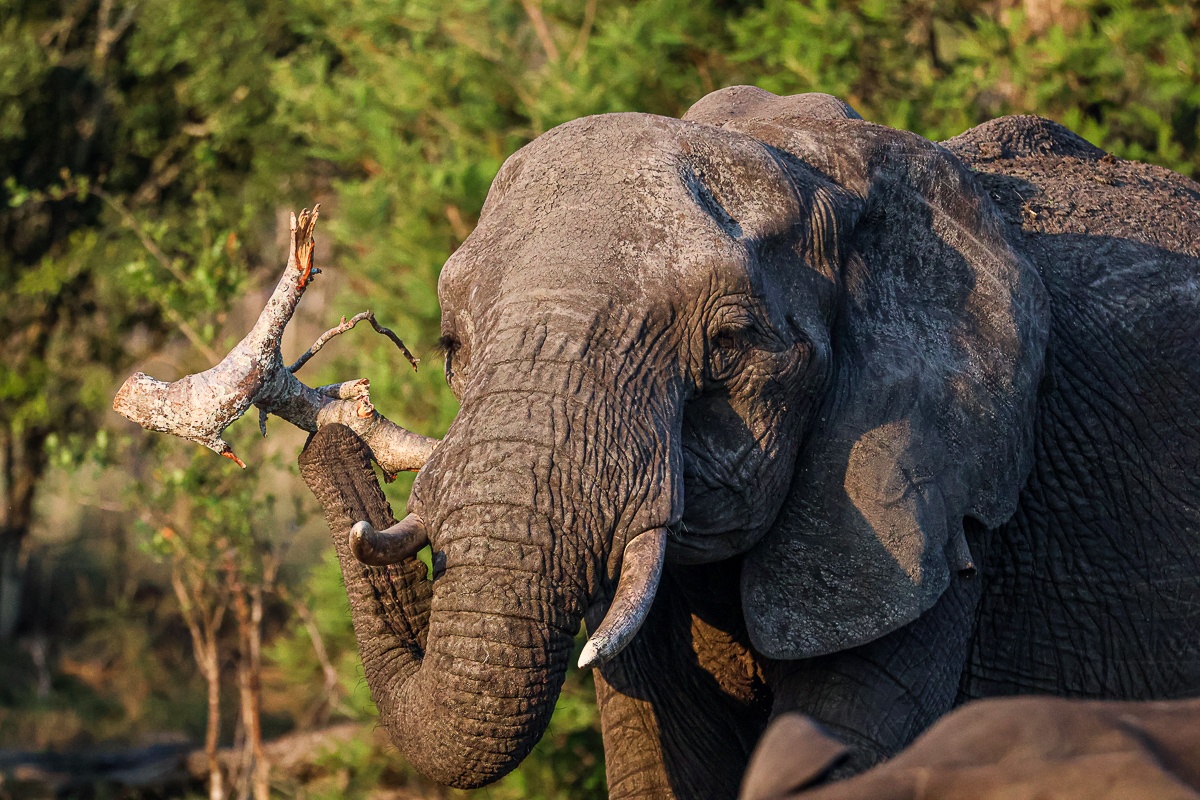Pharyngeal Pouches in Elephants
on Dec 12, 2023Elephants are one of the most intelligent and astonishing animals we have walking on the African continent. With them also being the biggest land-living mammal in the world, they have many adaptations to make their survival rate so successful. Water plays a big role in the majority of an animal’s life and without water, it is almost impossible to survive. Most of us who have been on safari before and have spent time with these gentle giants and have likely heard a very low rumble noise from breeding herds or even bulls. If not, maybe you have seen an elephant putting its trunk in its mouth and then spraying water over themselves, all this without drinking water from a waterhole. How is this possible?
Elephants have something we call the “Pharyngeal pouch”. Let’s go more into depth about this pouch.
Where is the Pharyngeal pouch situated?
The Pharyngeal pouch is situated behind the tongue, in the upper part of the throat. Perfectly positioned to receive water as the elephant drinks from a waterhole.
What is the Pharyngeal pouch used for?
This pouch has multiple uses for elephants and is essential for their everyday life. It absorbs water when the elephant drinks water and then stores the water, up to 4 litres, in the pouch. Studies have also shown that the pharyngeal pouch is bigger in desert elephants compared to elephants in areas with more rain and available water sources. This is all because elephants can regurgitate water from the pouch to drink it if they can’t find any water or struggle to find water. This comes in very handy especially in drier areas where water is not always available. The pharyngeal pouch will be used as a last resort for water as they don’t want to use all their reserves and be stuck with no water, which can lead to dehydration of the animal.


Elephants also use these pharyngeal pouches for communication. They communicate in multiple ways which include the following:
- Touching one another
- Visual displays
- Vocalisation
They can also communicate with the rumbling noises that they produce with the pharyngeal pouch. The rumbling sound we hear are the muscles in the pouch pulling together and relaxing again, rushing the water with high pressure through the pouch, which will then give off a certain message to the rest of the herd. This can sometimes sound like a sort of stomach rumble or even a nasal sound that is being produced, but don’t be fooled, this is indeed the pharyngeal pouch pulling its muscles together and relaxing it again.


Another good use for the pouch is for cows that have calves. On warmer days, elephants spray their body full of mud and water to bring down their body temperatures. In drier times, when water is not always available, the cow can regurgitate water from her pharyngeal pouch, put her trunk in her mouth to suck the water up and spray herself and her calf to cool down. They can also use these pouches as a heat absorption method, moving most of the body heat towards the pouch, which is filled with cool water, cooling the body temperature down.
How does it all work?
As the elephant drinks, about 4 litres of water moves straight to the pharyngeal pouch where it remains. The pouch has plenty of muscles around it that can squeeze the opening to open and closed so food and other water can move over the pouch, down the throat and into the stomach. Every time the elephant drinks water, the water in the pouch will be refreshed and the ‘old water’ will move down into the stomach.
The myth that indicates that elephants can suck water from their stomach is not true. We can just imagine all the undigested food that will be mixed with the water then, thus the pharyngeal pouch plays a vital role in storing water and separating it from the stomach and food, ready to use whenever needed. With elephants being water dependent animals, they need to drink on average between 65-100 litres of water per day. If they can’t find water, they also use their tusks and trunks to dig in drainage lines or dry riverbeds to get down to the water table and get fresh water. The pharyngeal pouch will be a last resort if they are desperate. Luckily in our area water is mostly available all year round, but just like we know nature, droughts are also part of it. During these times the behavior of elephants will change as they need to work much harder to find water.



When elephants can’t find any water, the body will slowly start absorbing water from this pouch, just enough for their body functions to operate as normal without dehydrating itself. This can keep the elephant going for days without drinking water but is not the perfect situation.
This pharyngeal pouch can almost be seen as a life pouch that elephants can rely on in times of need or stress. With their massive size, these animals need all the adaptations they can get to survive in the harsh elements of the African bush.
It just goes to show again how incredible Mother Nature is!
Blog by Ruan Mey (Earth Lodge Ranger)







